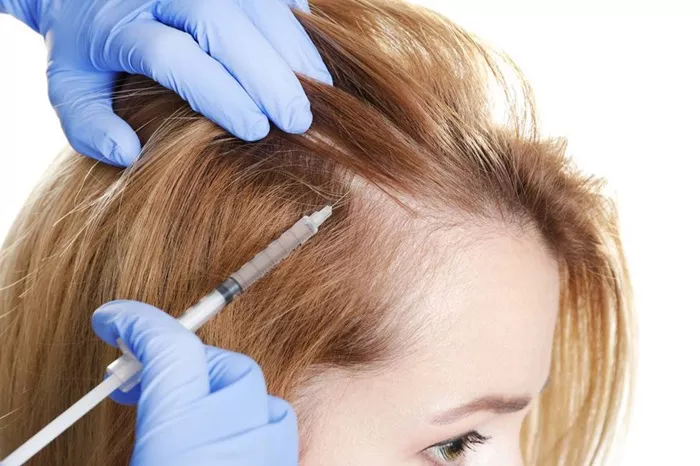Alopecia areata is a common autoimmune disorder. It results in hair loss on the scalp, face, and sometimes other areas of the body. This condition can be distressing. Fortunately, there are various treatment options available. This article explores the best medicines for alopecia areata.
Understanding Alopecia Areata
Alopecia areata occurs when the immune system attacks hair follicles. This leads to hair loss. The exact cause is unknown. However, genetics and environmental factors may play a role. The condition can affect people of all ages, genders, and ethnicities.
Topical Corticosteroids
Topical corticosteroids are the most commonly prescribed treatment for alopecia areata. These medicines reduce inflammation. They suppress the immune system in the affected area. Commonly used topical corticosteroids include:
Clobetasol propionate
Betamethasone dipropionate
Fluocinonide
These medications are available in various forms. Creams, ointments, and lotions are popular options. They are usually applied directly to the bald patches.
How to Use Topical Corticosteroids
Apply a small amount of the medication to the affected area. Gently rub it in. Do this once or twice daily. Follow your doctor’s instructions carefully. Prolonged use can cause side effects. These include thinning of the skin and stretch marks.
SEE ALSO: What to Eat to Stop Excessive Hair Fall?
Intralesional Corticosteroids
For more severe cases, intralesional corticosteroids are effective. These involve injecting the steroid directly into the bald patches. Triamcinolone acetonide is commonly used for this purpose.
How to Administer Intralesional Corticosteroids
A healthcare provider performs this procedure. The injections are given every four to six weeks. This method is effective for small patches of hair loss. It can be painful but usually provides quick results.
Topical Immunotherapy
Topical immunotherapy is another effective treatment. It involves applying chemicals to the scalp. These chemicals cause an allergic reaction. This reaction stimulates hair growth. Common chemicals used include:
Diphencyprone (DPCP)
Squaric acid dibutylester (SADBE)
Dinitrochlorobenzene (DNCB)
How to Use Topical Immunotherapy
A healthcare provider will apply the chemical to a small area of the scalp. This is done once a week. The goal is to create a mild allergic reaction. This can cause redness, itching, and swelling. Hair growth usually begins within three to six months.
Minoxidil (Rogaine)
Minoxidil is an over-the-counter medication. It is widely used for hair loss. It can be effective for alopecia areata as well. Minoxidil stimulates hair follicles. It increases blood flow to the affected area.
How to Use Minoxidil
Apply the solution or foam to the bald patches. Do this twice daily. It may take several months to see results. Minoxidil is generally well-tolerated. Side effects are rare but can include scalp irritation.
Anthralin
Anthralin is a tar-like substance. It is used to treat psoriasis and alopecia areata. Anthralin modifies the skin’s immune function. It promotes hair growth in the affected areas.
How to Use Anthralin
Apply a small amount to the bald patches. Leave it on for 20 to 60 minutes. Then, wash it off with water. This treatment is called “short contact therapy.” It reduces the risk of skin irritation. Anthralin can stain the skin and clothing, so handle it with care.
Systemic Corticosteroids
Systemic corticosteroids are oral or injectable steroids. They are used for severe cases of alopecia areata. These medications suppress the immune system throughout the body. Prednisone is commonly prescribed.
How to Use Systemic Corticosteroids
A healthcare provider will prescribe the appropriate dosage. It is usually taken daily for several weeks. The dosage is gradually reduced. Long-term use is not recommended due to side effects. These include weight gain, high blood pressure, and osteoporosis.
Janus Kinase (JAK) Inhibitors
JAK inhibitors are a newer treatment option. They target specific pathways in the immune system. These medications can be highly effective. Tofacitinib and ruxolitinib are commonly used JAK inhibitors.
How to Use JAK Inhibitors
These medications are taken orally. A healthcare provider will prescribe the appropriate dosage. Regular monitoring is necessary. Side effects can include an increased risk of infections and liver damage.
Platelet-Rich Plasma (PRP) Therapy
PRP therapy is a non-surgical treatment. It involves injecting the patient’s own platelets into the bald patches. This promotes hair growth. Platelets contain growth factors that stimulate hair follicles.
How to Administer PRP Therapy
A healthcare provider performs this procedure. Blood is drawn from the patient. The platelets are separated and concentrated. Then, they are injected into the scalp. This procedure is usually done every four to six weeks. Multiple sessions are often required.
Alternative Treatments
Some people turn to alternative treatments. These include herbal remedies and essential oils. While not scientifically proven, some individuals report success. Popular options include:
Aloe vera
Peppermint oil
Lavender oil
Lifestyle and Home Remedies
In addition to medical treatments, certain lifestyle changes can help. These include:
Reducing stress: Stress can trigger alopecia areata. Practice relaxation techniques. Yoga and meditation can be beneficial.
Eating a balanced diet: A healthy diet supports hair growth. Include plenty of fruits, vegetables, and lean proteins.
Using gentle hair care products: Avoid harsh chemicals and heat styling. Use mild shampoos and conditioners.
Conclusion
Alopecia areata can be a challenging condition. However, various treatment options are available. Topical and intralesional corticosteroids are commonly used. Topical immunotherapy and minoxidil are also effective. JAK inhibitors and PRP therapy offer promising results. Always consult with a healthcare provider. They can recommend the best treatment for your specific case. With the right approach, hair growth can be restored.

